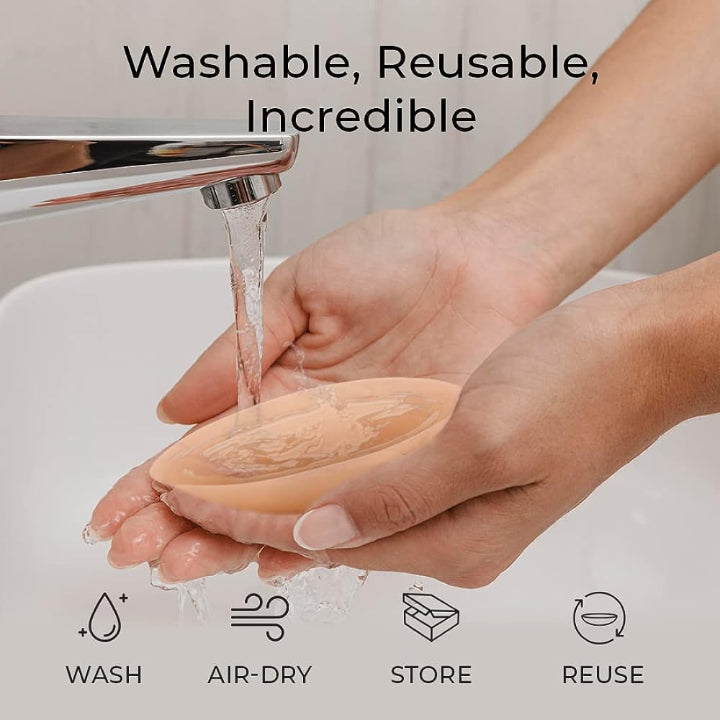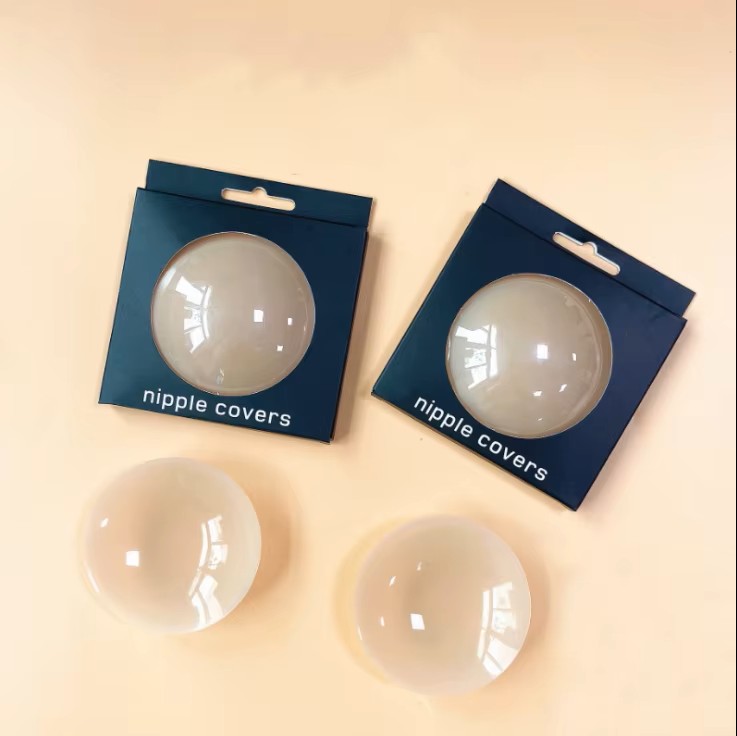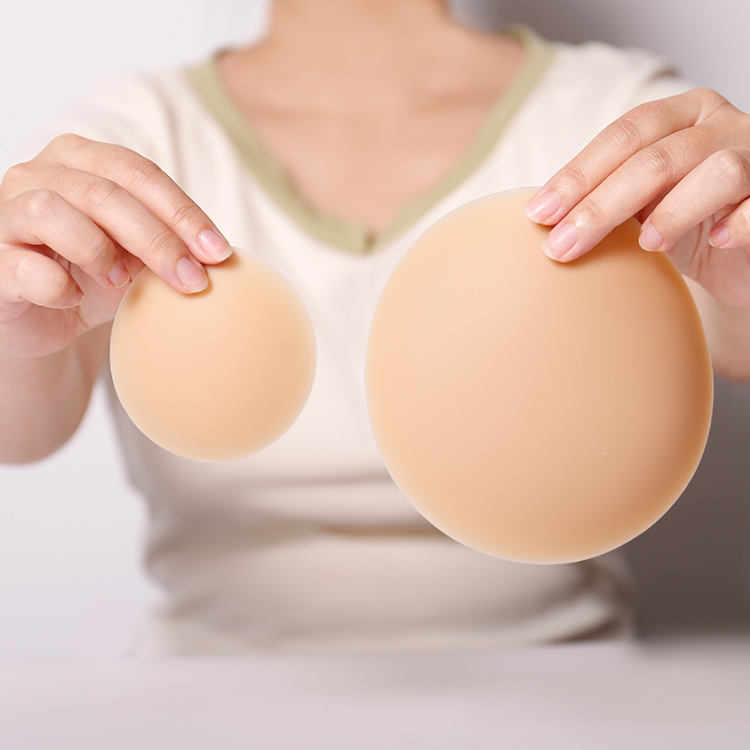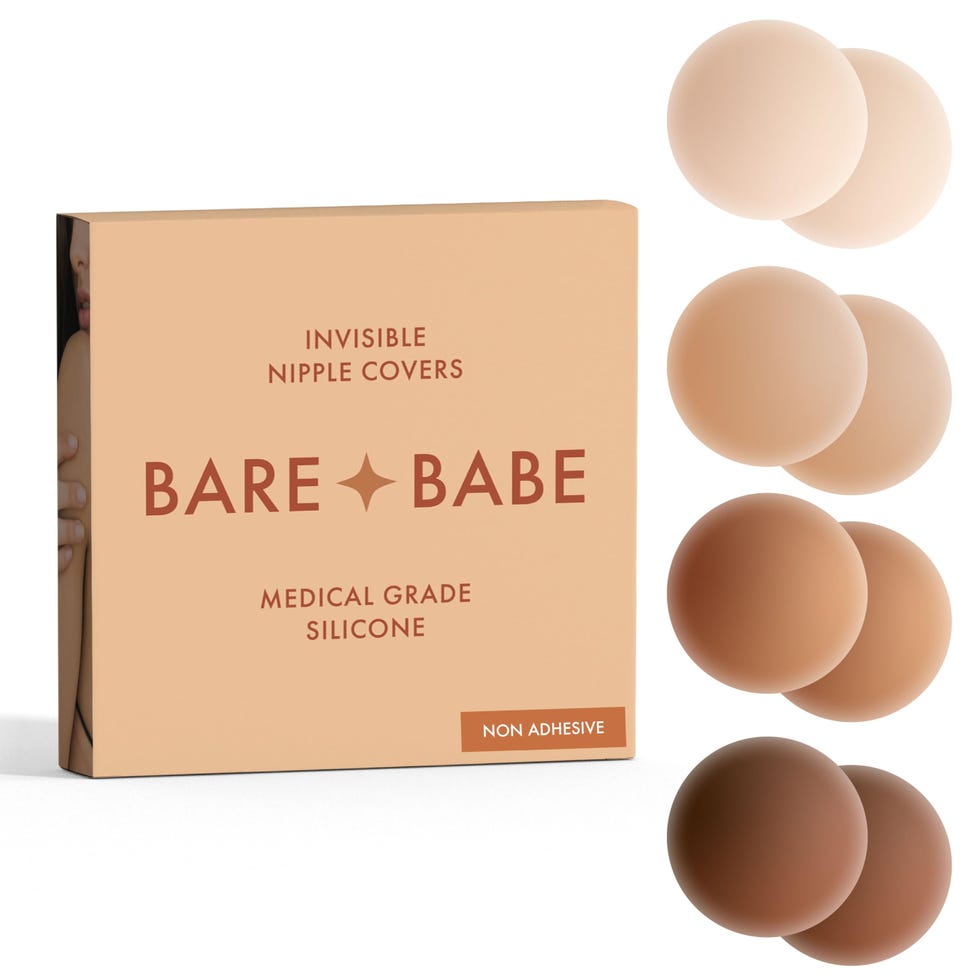Content Menu
● Introduction: Why Proper Nipple Cover Cleaning Matters
>> Why Clean Your Nipple Covers?
● Understanding Different Types of Nipple Covers
>> Silicone Nipple Covers
>> Fabric Nipple Covers
● Step-by-Step: How to Wash Silicone Nipple Covers
>> 1. Remove Carefully After Use
>> 2. Immediate Rinse
>> 3. Use Lukewarm Water
>> 4. Gentle Soap Only
>> 5. Soft Rubbing
>> 6. Rinse Thoroughly
>> 7. Air-Dry Flat
>> 8. Replace Protective Film
● Step-by-Step: How to Wash Fabric Nipple Covers
>> 1. Gentle Removal
>> 2. Hand Wash Only
>> 3. Light Rubbing
>> 4. Thorough Rinse
>> 5. Air Dry
>> 6. Storage
● Expert Tips: Maintaining Nipple Cover Stickiness
>> Dos and Don'ts for Nipple Cover Care
● Why Proper Cleaning is Essential
● How Often Should You Wash Nipple Covers?
● Video Demonstration — How to Wash Nipple Covers
● Common Questions About Washing Nipple Covers
>> 1. Can you use regular hand soap to wash nipple covers?
>> 2. Is it safe to machine wash nipple covers?
>> 3. What should I do if nipple covers lose stickiness?
>> 4. How do you keep nipple covers fresh between uses?
>> 5. Are all nipple covers reusable?
● Summary Table — How to Wash Nipple Covers
● Conclusion: Mastering How to Wash Nipple Covers
● FAQs: How to Wash Nipple Covers
● References
How to Wash Nipple Covers: The Ultimate Guide for Lasting Hygiene and Adhesive Power
Introduction: Why Proper Nipple Cover Cleaning Matters
In today's world of modern fashion and personal care, nipple covers are a practical staple for anyone wanting seamless coverage under form-fitting tops, swimsuits, or specialty garments. To get the most out of these essential accessories, knowing how to wash nipple covers correctly is crucial. Improper cleaning can damage adhesive, decrease longevity, and may even cause skin problems. This guide will teach you everything you need to know about how to wash nipple covers safely and effectively for long-term use, ensuring your covers stay fresh, sticky, and hygienic.[1][2]

Why Clean Your Nipple Covers?
Cleaning your nipple covers is crucial for several reasons:
1. Hygiene: Just like any other clothing item, nipple covers can accumulate sweat, oils, and dirt. Regular cleaning helps prevent skin irritation and infections.
2. Longevity: Proper care can extend the life of your nipple covers, allowing you to use them multiple times without losing their adhesive properties.
3. Performance: Clean nipple covers adhere better to the skin, providing the support and coverage you need.
Understanding Different Types of Nipple Covers
Before discussing how to wash nipple covers, it's important to recognize the materials and construction that influence care routines:
Silicone Nipple Covers
Silicone is the most common material for reusable nipple covers due to its lifelike texture, hypoallergenic properties, and excellent adhesion. Silicone nipple covers offer invisible protection under clothing and are reusable dozens of times with proper care.[2]

Fabric Nipple Covers
Fabric-based covers utilize breathable materials like cotton, polyester, or Lycra, offering lightweight comfort. Many are intended for single use, but reusable fabric options are available and require gentle cleaning.[2]
Step-by-Step: How to Wash Silicone Nipple Covers
How to Wash Nipple Covers Made from Silicone
If you wear silicone nipple covers, regular and gentle washing is the secret to maximizing their life and adhesion.
1. Remove Carefully After Use
Start by gently peeling off the covers from your skin. If they are difficult to remove, moisten the edges with a warm, damp cloth to soften the adhesive before pulling.[1]
2. Immediate Rinse
Wash your silicone nipple covers immediately after each use to remove sweat, body oils, and dust that could harm adhesive performance. Neglecting this step can quickly shorten your nipple covers' lifespan.[2]
3. Use Lukewarm Water
Hold the covers under lukewarm running water; avoid hot water, which can damage silicone and adhesive layers.[3][2]
4. Gentle Soap Only
Apply a mild, SLS-free soap with your fingertips—never use harsh chemicals or rough scrubbing pads. Avoid antibacterial soaps with strong additives as these can degrade adhesives.[4][3][2]
5. Soft Rubbing
Rub the surface gently with clean hands, focusing on the sticky side to wash away oils and residues. Refrain from twisting, squeezing, or stretching the silicone.[4]
6. Rinse Thoroughly
After cleaning with soap, rinse under lukewarm water until no suds remain. Soap residue can cause loss of stickiness if not completely removed.[4]
7. Air-Dry Flat
Shake off excess water gently. Place the covers adhesive side up on a clean, dust-free flat surface to air-dry. Avoid towels or paper towels which may leave lint and reduce adhesion.[2]
8. Replace Protective Film
Once fully dry, reapply the original plastic film to the adhesive side to keep dust at bay and maximize stickiness for the next use.[4][2]
Step-by-Step: How to Wash Fabric Nipple Covers
How to Wash Nipple Covers Made from Fabric
Fabric nipple covers require a slightly different cleaning process, particularly for reusable models.
1. Gentle Removal
Peel off the fabric covers carefully to avoid damaging their shape or structure.[2]
2. Hand Wash Only
Immerse fabric covers in a bowl of lukewarm water with a mild soap or gentle cleanser. Using harsh detergents can weaken adhesives and decrease lifespan.[2]
3. Light Rubbing
Delicately rub with your fingertips to remove sweat or body oil, focusing on maintaining the integrity of the adhesive layer.
4. Thorough Rinse
Ensure all soap is rinsed out to avoid sticky residue.
5. Air Dry
Let the covers air dry naturally; never use a hair dryer, iron, or tumble dryer. High heat can damage material and adhesive.
6. Storage
Once dry, store in their original packaging or a dust-free container to protect the adhesive and prevent contamination.[2]

Expert Tips: Maintaining Nipple Cover Stickiness
Dos and Don'ts for Nipple Cover Care
- Do clean covers immediately after use to prevent odors and accumulation of body oils.
- Do replace the plastic backing after drying to guard the adhesive.
- Do store in a clean, dust-free environment.
- Do not soak covers in water or use strong detergents, which can destroy performance.[1][2]
- Do not dry with towels or tissues on the sticky side.
- Do not use on oily or moisturized skin—always cleanse and dry skin thoroughly before application.[2]
Why Proper Cleaning is Essential
Hygiene is paramount: clean nipple covers avoid buildup of dead skin, sweat, oils, and external debris. Without regular cleaning, covers can cause skin irritation, rashes, or infection, and lose their staying power much faster. Proper cleaning also reduces the risk of odor and ensures a comfortable, worry-free user experience.[1][2]

How Often Should You Wash Nipple Covers?
- After every use: For best results, wash after each wear especially if you have sweated or worn them all day.
- Not every day needed: If lightly worn and clean, you can sometimes wait until visible dirt or odor appears, but delaying too long encourages adhesive loss.
- Avoid over-washing: Excessive cleaning can also reduce stickiness—balance hygiene with careful use.[5][3]
Video Demonstration — How to Wash Nipple Covers
Below you'll find a step-by-step video demonstration on the best practices for washing nipple covers:
- [YouTube proper removal and washing guide][7]
The visual can help clarify each stage of the process—watching a real demonstration ensures you understand the difference between vigorous and gentle cleaning. Look for videos highlighting how to wash nipple covers by hand, proper rinsing, and careful drying routines.
Common Questions About Washing Nipple Covers
1. Can you use regular hand soap to wash nipple covers?
Mild, SLS-free soap is preferred, as regular soaps with harsh chemicals or moisturizers can degrade the adhesive or cause irritation.
2. Is it safe to machine wash nipple covers?
No, machine washing will likely damage both fabric and silicone covers and remove adhesive. Always opt for handwashing.
3. What should I do if nipple covers lose stickiness?
Try re-cleaning thoroughly. If stickiness does not return, it's probably time to replace them—the adhesive naturally wears out over many uses.[2]
4. How do you keep nipple covers fresh between uses?
Replace the protective film, store in a dust-free container, and make sure they are thoroughly dry before storage.
5. Are all nipple covers reusable?
No, some fabric nipple covers are single-use. Always check packaging or product descriptions for reusability before cleaning.
Summary Table — How to Wash Nipple Covers
| Cover Type | Water Temp | Soap Type | Drying | Key Steps |
| Silicone | Lukewarm | Mild, SLS-free | Air-dry | Gentle hand wash, no abrasion |
| Fabric | Lukewarm | Gentle | Air-dry | Handwash, avoid heat, gentle rinse |
Conclusion: Mastering How to Wash Nipple Covers
Mastering how to wash nipple covers guarantees comfort, repeated wear, and protection from skin issues. Always practice gentle removal, immediate handwashing with the right products, air drying, and careful storage. This routine helps extend lifespan, maintain hygiene, and ensure you always have a fresh, sticky pair ready for your next outfit. Whether you use silicone or fabric versions, following a regular cleaning regimen as outlined will keep your nipple covers clean, comfortable, and effective for as long as possible.[3][1][4][2]
FAQs: How to Wash Nipple Covers
Q1: How often should I wash my nipple covers?
After each use, especially after sweating or wearing all day.[3][1]
Q2: Can I reuse disposable fabric nipple covers?
No. Disposable ones are meant for one-time use and cannot be cleaned and reused.
Q3: What if the sticky side gets dirty?
Try gentle washing and air drying. If dust or lint sticks, adhesive strength may not fully recover.[2]
Q4: Can I dry nipple covers with a hairdryer?
No. Use only air drying; heat damages silicone and adhesive.[2]
Q5: What soap is best for washing nipple covers?
Always use a gentle, SLS-free, or baby soap to protect both your skin and the adhesive layer.[4]
References
[1](https://undercover-glamour.com/howtowearnipplecovers)
[2](https://nuebootape.com/blogs/nueboo-blog/clean-wash-nipple-covers)
[3](https://niidor.com/blogs/how-to/how-to-clean-nipple-covers-a-comprehensive-guide)
[4](https://mynudeshade.com/blogs/news/how-to-clean-reusable-nipple-covers-before-and-after-wearing)
[5](https://www.reddit.com/r/HerOneBag/comments/1i09jd8/how_to_prevent_smell_when_using_nipple_covers/)
[6](https://www.tiktok.com/@thejulianaamoateng/video/7398911309909069062?lang=en)
[7](https://www.youtube.com/shorts/An-8qDJOjkI)
[8](https://www.instagram.com/reel/C3qm7amgfnm/?hl=en)
[9](https://www.instagram.com/reel/Cw7VUj6BeiE/?hl=en)
[10](https://www.facebook.com/Bzezofficial/videos/wondering-how-to-keep-your-nipple-covers-fresh-heres-a-quick-wash-guide-1%EF%B8%8F%E2%83%A3-gent/1521596461876063/)
[11](https://www.tiktok.com/@livi.paul/video/7483604681151876374)
[12](https://www.reddit.com/r/TheGirlSurvivalGuide/comments/9wkgqv/need_help_for_nipples_cover/)
[13](https://www.youtube.com/shorts/_zmTomUrTeA)
[14](https://www.getboomba.com/blogs/boomba-blog/ultimate-guide-to-nipple-covers-how-to-choose-wear-and-maintain)
[15](https://www.tiktok.com/@ecora_official/video/7477225691830816008)
[16](https://www.tiktok.com/@ecora_official/video/7454103070767648007)
[17](https://www.facebook.com/barebonestore/videos/how-to-wash-your-nipple-covers-the-right-way-and-make-them-last-longer-please-ne/211489700530262/)
[18](https://silveretteaustralia.com/blogs/resources/how-to-clean-silverette)
[19](https://www.tiktok.com/@kookoovlogs/video/7356613987464645893)


































































